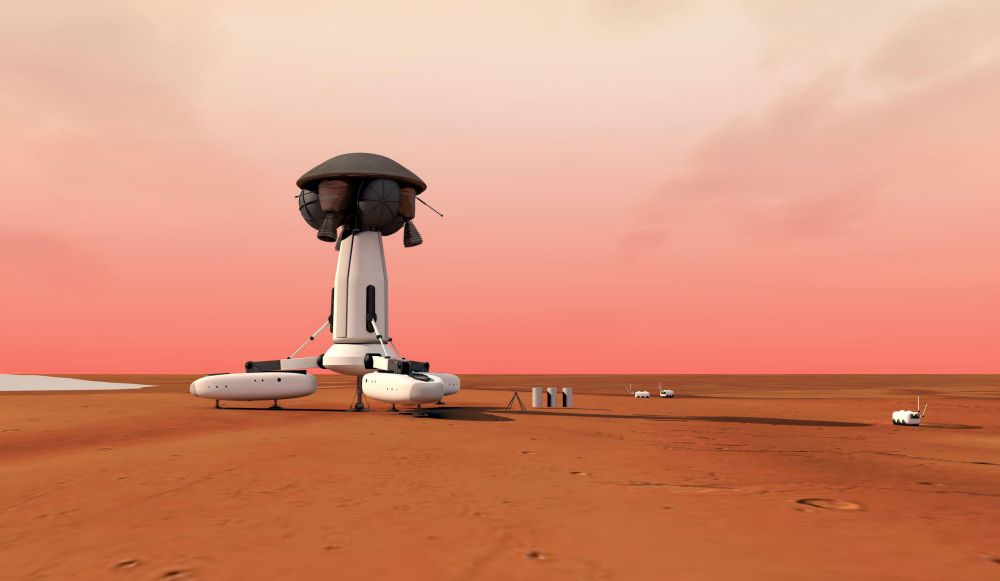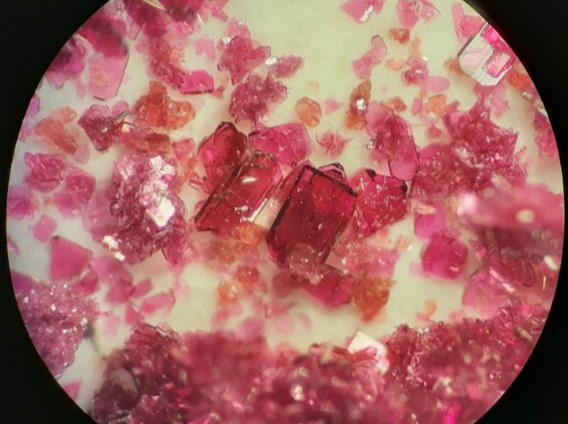
How to make Mars habitable for people?
Engineers at Swiss university EPFL have developed a route map for the foundation of a colony on Mars: robots will first build accommodation and take advantage of the water on the red planet.
The colonisation of Mars is seen as one of the ultimate challenges for the space industry and in exploration of the universe. But Mars is many light-years away and is a hostile environment for mankind, to name but two challenges.
Engineers at the Swiss École Polytechnique Fédérale de Lausanne (EPFL) have now researched in great detail the best possible way of establishing a colony on Mars. The colony would comprise six people, who will eventually return to earth.
North pole the most attractive
To start with, the researchers determined the best spot to found such a colony. That is the planet’s North Pole, during the summer. They would stay at least 288 days, as that is the period of continuous daylight there.
Formation of the colony takes place in two phases. In phase one, robots are sent to Mars. They would construct basic accommodation, and explore any natural sources of water in the vicinity. Only then will the crew be flown in.
The two-phased approach safeguards the Mars pioneers and limits the volume of cargo to be transported to Mars. Yet this still requires a rocket which can transport 110 tons of equipment in one go, according to estimates by the EPFL researchers. Until now, rockets have transported a maximum of around 80 tons.
There is ice around
In order to make a nine-month stay possible, the pioneers would need to make maximum use of what Mars has to offer, and that is mainly water. That is also one of the reasons for establishing a colony at a pole. There is ice available there, which can be used for the production of drinking water, oxygen and nitrogen, all of them essential survival elements. Other components from Mars' atmosphere (CO2) and its soil (silicon, iron, aluminium and sulphur) can serve as raw materials to produce cement, glass, plastic and even fuels such as hydrogen and methanol. In due time, this may render the base self-supporting.
Before reaching that stage, however, the colony will remain dependent on our own planet: food and energy will need to be transported from earth, in the form of freeze-dried food, a thorium nuclear reactor and batteries.
Three structures
The base on Mars will have three different structures: the core, three capsules and a dome. The core provides accommodation (12.5 metres high, and five metres wall-to-wall) in which the pioneers will live, with all the necessary facilities. It will be surrounded by three capsules that serve as airlocks between the core accommodation and the outside world. The robots will have to purpose-build these capsules during the first phase of the colonisation process, so the Mars pioneers can live in them to start with.

The dome covers the entire base, is made from a plastic screen, with a 3-metre-thick layer of ice on top. The dome creates additional accommodation space, protects the inhabitants against deep-space radiation and micro-meteorites flying around, while also serving as an air-pressure shield.
Cargo module
In order to stock the Mars base, the engineers have devised a special spacecraft that would transport cargo from the shuttles that circle Mars, to the planet itself. The spacecraft will source its fuel for take-off from raw materials on Mars, and for landing again on Mars from the shuttle.

It is still very uncertain whether any of this will ever materialise. According to the engineers, the purpose of the study is particularly to find out what type of robots need to be developed for future space missions. Not just to Mars, as they could just as well be developed for space missions to the moon or to asteroids.

If you found this article interesting, subscribe for free to our weekly newsletter!
Images: EPFL.






